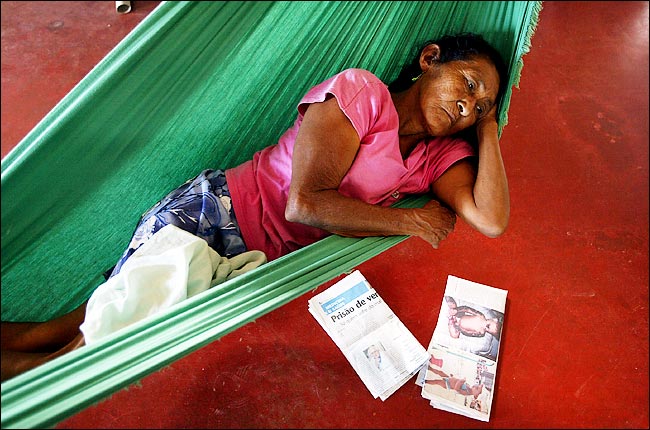 |
| A DYING TONGUE REVIVED Joao Silva for The New York Times / A Brazilian in
a hospital ward for Nheengatú speakers in São Gabriel da Cachoeira. Copyright 2005 The
New York Times Company |
|
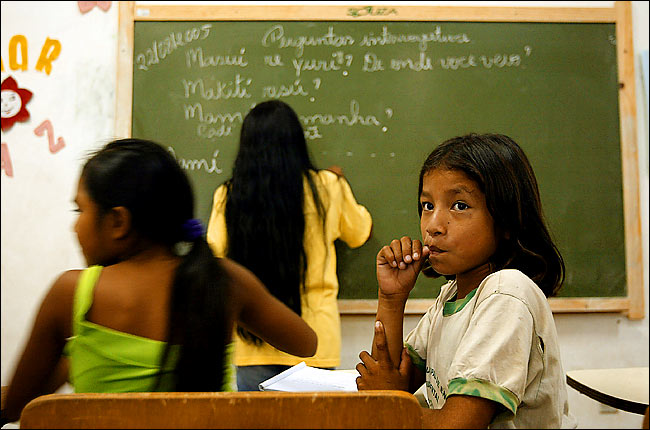 |
| A DYING TONGUE REVIVED Joao Silva for The New York Times / A Nheengatú
language class in a school in São Gabriel da Cachoeira. To help relieve a shortage of
qualified teachers of the language, a training course for instructors began last month.
Copyright 2005 The New York Times Company |
|
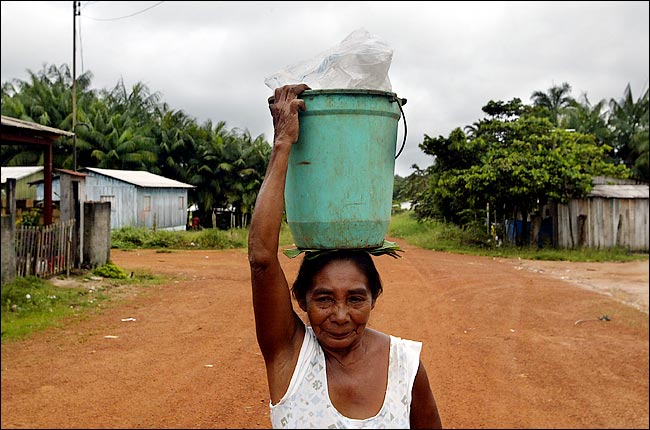 |
| A DYING TONGUE REVIVED Joao Silva for The New York Times / Two years ago,
São Gabriel da Cachoeira became the only municipality in Brazil to recognize a language
other than Portuguese as official. Copyright 2005 The New York Times Company |
|
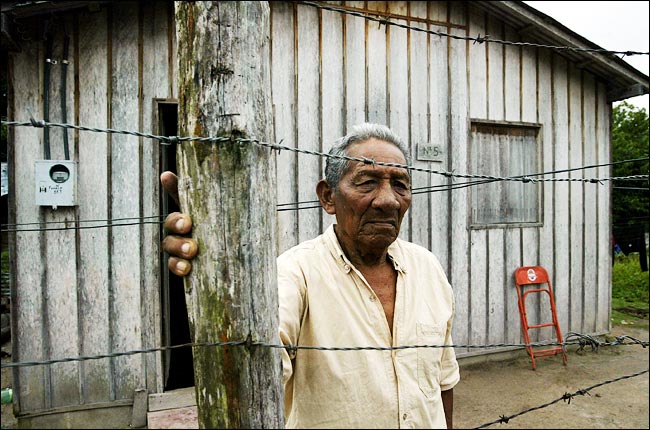 |
| A DYING TONGUE REVIVED Joao Silva for The New York Times / The survival
of Nheengatú has been aided by the profusion of tongues in the region, which complicates
communication among indigenous tribes. Copyright 2005 The New York Times Company |
|
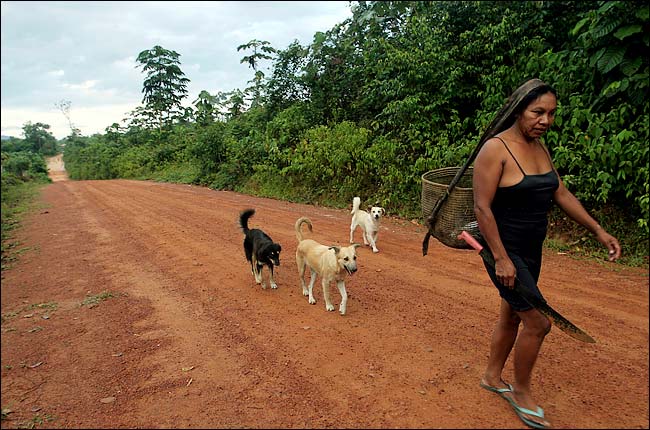 |
| A DYING TONGUE REVIVED Joao Silva for The New York Times / In its
colonial heyday, língua geral was spoken not just throughout the Amazon but as far south
as the Paraná River basin, more than 2,000 miles from São Gabriel da Cachoeira.
Copyright 2005 The New York Times Company |
|
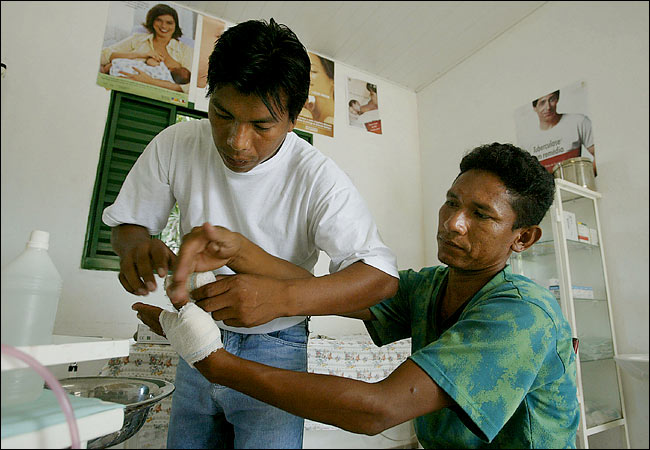 |
| A DYING TONGUE REVIVED Joao Silva for The New York Times / People who can
speak Nheengatú have seen their value on the job market rise and are now being hired as
interpreters, teachers and public health aides. Copyright 2005 The New York Times Company |
|
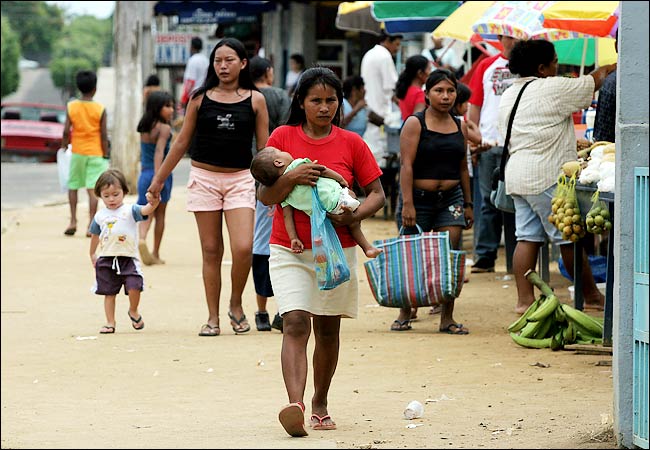 |
| A DYING TONGUE REVIVED Joao Silva for The New York Times / Unicef is
providing money to discuss other ways to carry out the law making the language official,
and advocates hope to open an Indigenous University in São Gabriel da Cachoeira soon,
with courses in Nheengatú. Copyright 2005 The New York Times Company |
|
|
|
|
|






